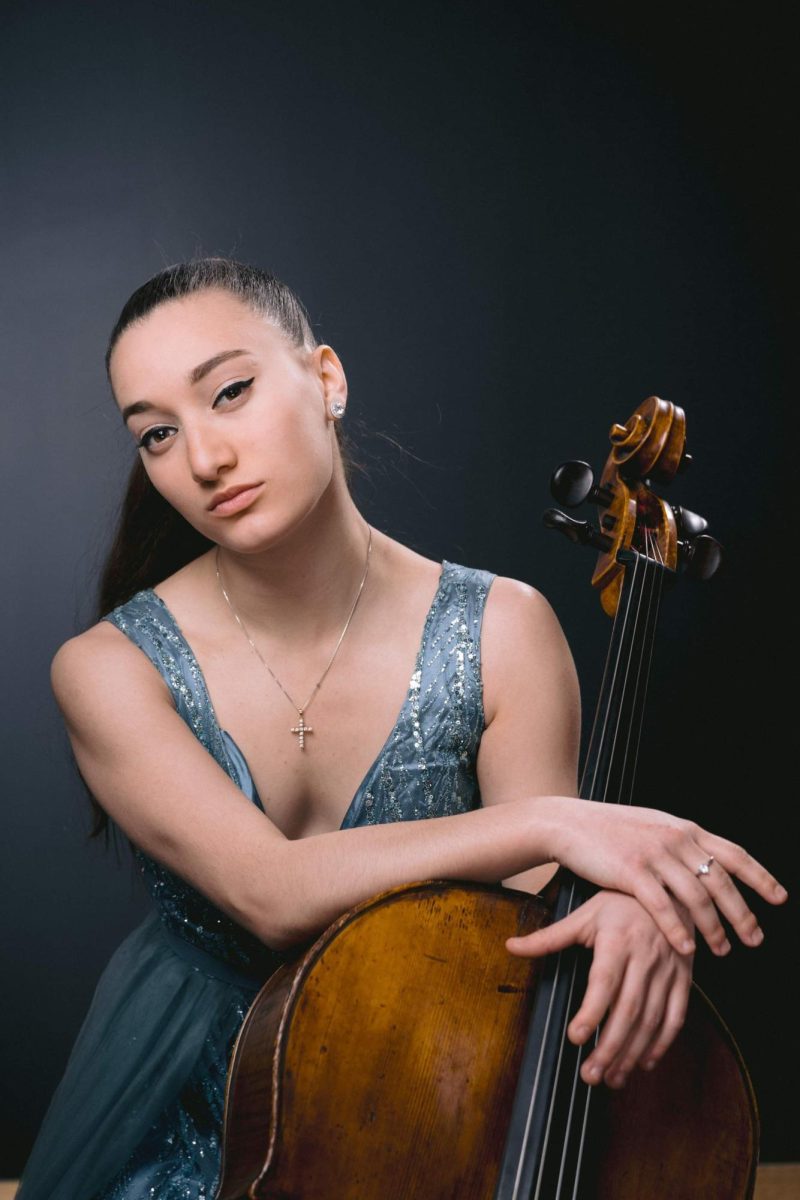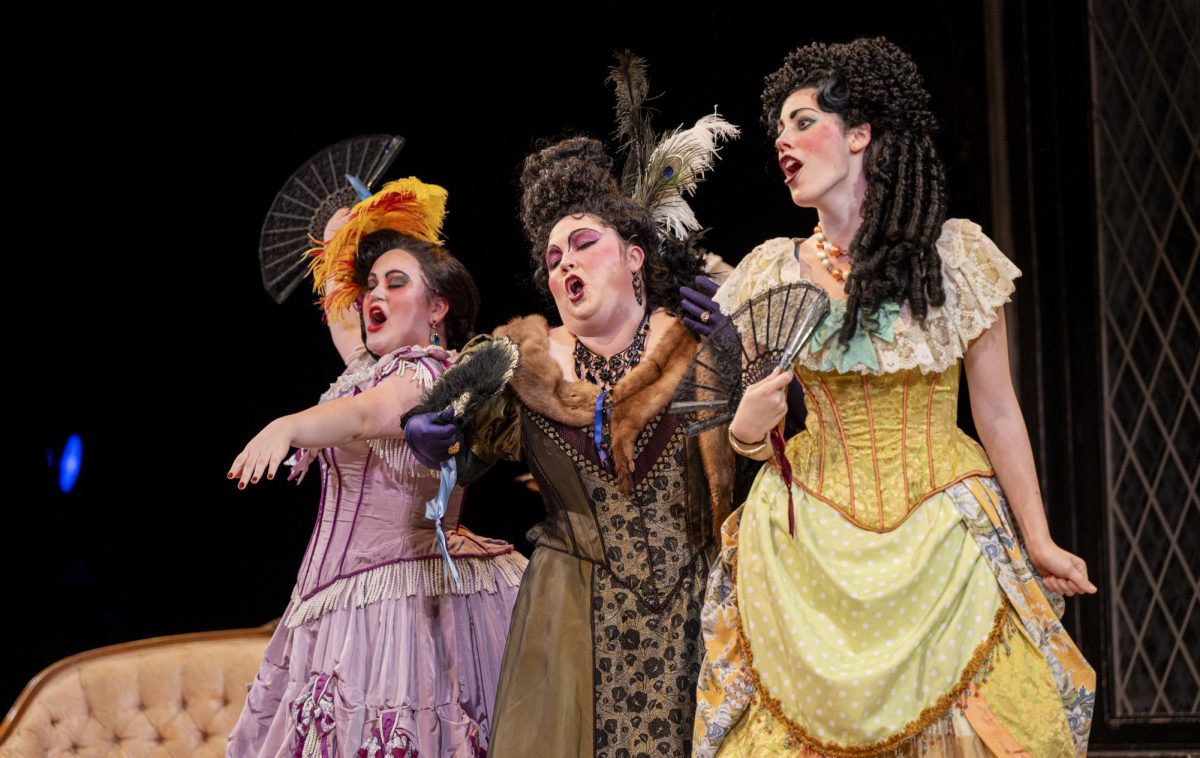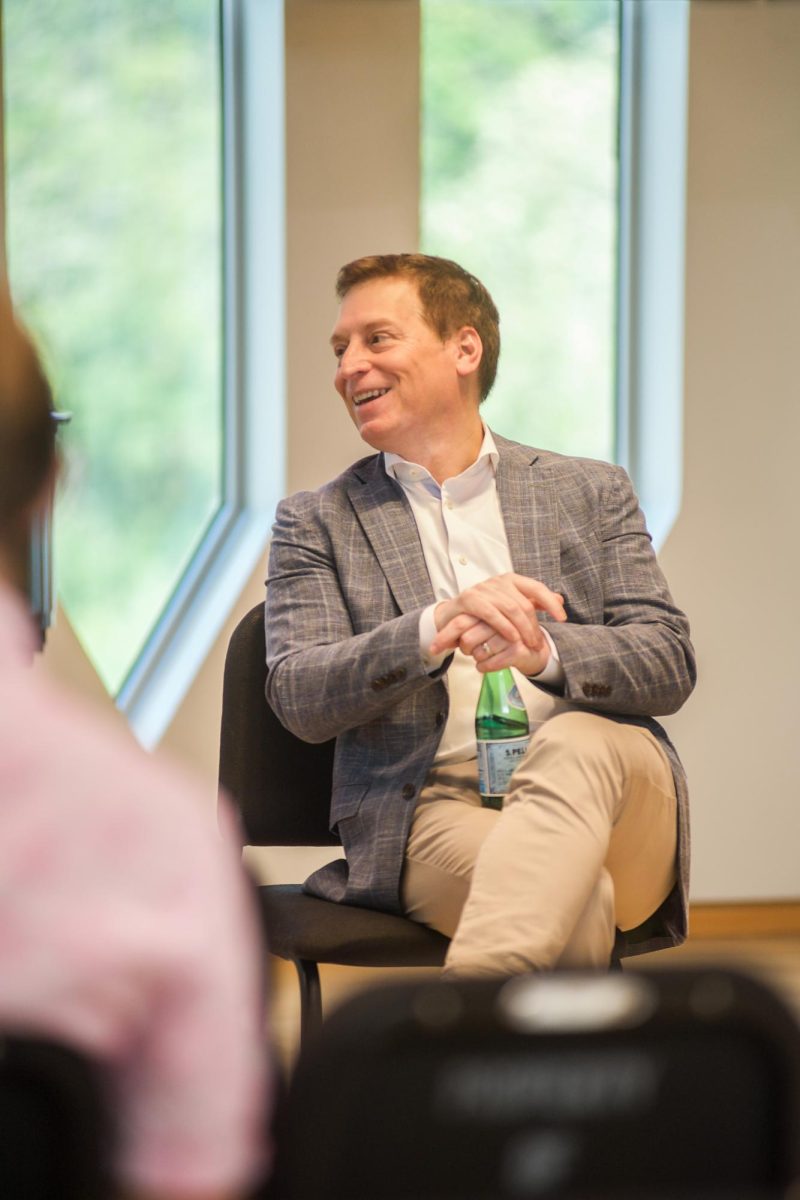On Sunday, Nov. 17 at 3 p.m., a group of student composers, conductors, and musicians held a showcase in David H. Stull Recital Hall. The production, organized by College third-year Naci Konar-Steenberg, brought together the creativity of Oberlin students to produce a unique audience experience never before seen at Oberlin. Titled “Moving Pictures,” the concert was inspired by Modest Mussorgsky’s 1874 suite Pictures at an Exhibition, which originally served as a musical depiction of illustrations by Viktor Hartmann, and Maurice Ravel’s 1922 adaptation of it for orchestra. Konar-Steenberg started conceptualizing and organizing the project nearly a year ago.
“I had this idea: what if we got Oberlin artists to make pieces of art and get composers to write music to them and put on this big concert?” Konar-Steenberg said. “I kind of figured if that was going to happen, there wasn’t any good reason why I shouldn’t just do that myself. I sent out a lot of emails, and 11 months later, here we are.”
The process began with Oberlin artists providing works to student composers by the middle of the 2024 spring semester. From there, the student composers spent months composing musical renditions of these works. Each composer was given creative liberty, and each of the five different compositions consist of an array of different orchestrations and instrumentations. For some composers, this was their first time creating a piece of music around a singular still image.
“This is the first time I’ve [composed] something like this,” double-degree fifth-year Jerry Achtermann said. “In [the artist’s] work, there was so much movement implied, even in this one image.”
Achtermann’s composition “eelsdance” was inspired by Conservatory third-year Amanda Hergn’s painting “Below.” He received Hergn’s art in April, began formulating concepts over the summer, and began composing and finalizing the piece this fall.
“In my mind, there’s a really calm and sort of pastoral, underwater texture that’s kind of static — it’s the stasis of this underwater environment,” Achtermann said. “Then in the second part, the eel comes in and just kind of wreaks havoc. … I wanted to show the movement of the eel, and I thought the most effective way to do that was to have a more static environment at the beginning.”
The creative breadth of the pieces was expansive, from Conservatory fourth-year Sasha Paris-Carter’s “Fired up mud chuckers” for flowerpots and flute to Conservatory fourth-year Francesca Neibel-Spruill’s “Sundogs” for flute, bassoon, horn, tuba, violin, viola, cello, double bass, and percussion.
Between musicians, artists, and composers, it was a new experience for all involved.
“I primarily compose for percussion ensembles, and I’ve done some drumline, jazz band, and pep band compositions and arrangements, so this is my first time composing something for a chamber group,” double-degree second-year Axel Martin said. “It was really interesting to work with the artist because she really just gave me a piece of art, and it’s like, ‘Okay, I just need to think of something that goes with this.’ So, I got to take my creative liberties there. It was really cool putting it with live musicians because again, I’ve never composed a chamber piece before.”
In addition to working directly with musicians on their compositions, Achtermann and Martin were able to conduct their own works in Sunday’s concert.
“The conducting part made me see the piece in a different light, for sure — It had a lot of rhythmic changes,” Achtermann said. “I think it’s a different thing to listen to playback on your computer or listen to a recording of a piece that maybe someone else wrote than conducting it and rehearsing it with a group. That was definitely a huge learning experience.”
Walking into Stull Recital Hall, the pieces of art covered the walls, including one projected onto a screen. The concert programming overall was a meticulously curated event, with multiple rehearsals in the leadup to Sunday and independent work by the artists, composers, and musicians. What resulted was a unique display of Oberlin skill and talent and a nod to the strength of creative collaboration among different areas of the school.
“I wanted not just Conservatory Composition majors, but also everyone from TIMARA to people who do a little bit of composition on the side, like myself, to have the opportunity to present their music,” Konar-Steenberg said. “That kind of fast-paced creative collaboration really excites me — that was the impetus behind this. I would love to do something like this again in the future.”






